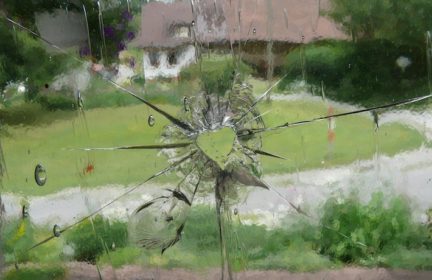Prepper home safety – how to prevent and avoid accidents in the home during a crisis.
In a pandemic, many of us prefer not to attend a hospital or medical setting. If going to a hospital or clinic is necessary, fine, but we try to avoid creating situations where we have to go.
There are many other types of crisis that would evoke the same response from us.
We want to stay safe in our homes and avoid mishaps and accidents. No one wants to compound an already challenging situation with an infection or broken leg or severe burns or medication overdose or interaction.
I thought of my grandmother who had caught the side of her leg on a metal washtub. The jagged piece of metal had been there for a while, but no one fixed or did something so that she wouldn’t tear her leg on it and that is exactly what happed.
Her leg infected, to the point of being almost gangrenous (as my Dad told it). When he came to the house after meeting Mom, he saw grandmothers’ leg and grabbed his kit. He poured the powdered sulpha that the soldiers carried straight into the hole in her leg. He stopped the infection and when she died later, she still had the leg.
Today, I thought about various mishaps that can occur in our homes and property if in a house and decided to become proactive about addressing any areas of concern, but first I had to make a list of potentially hazardous situations.
This list does not include every potential hazard or risk. All other ideas, suggestions or discussion welcome.
My second office job was in insurance, in the claims department. Most claims for the household were fires and fire and/or smoke damage that originated in the kitchen and were fires started by leaving unattended pots, usually with grease, on the unattended burner.
Pot handles sticking out instead of turned so as not to catch someone’s clothing, can cause serious burns if the pot comes down on them or anyone near by.
Fire extinguishers and large boxes of baking soda as backup for kitchen fires.
Good quality pot holders can prevent burns and the possible complication of infection.
Dull knives are dangerous. Sharp knives slice properly and don’t slip the way a dull knife will. Cuts are a vector point for infection or a serious wound where it is hard to staunch the bleeding.
Cook food well done. A gut infection is not a good thing to have at anytime.
Battery operated carbon monoxide alarm on all levels. Test them monthly and have backup batteries for them on hand.
Smoke detectors on all levels and back up batteries for them.
Fix any trip hazards such as loose carpets, rugs or other flooring.
Solid hand rails on all stairs, preferably a hand rail on each side of stairs.
Hand grips in shower and bath areas. A person I know slipped and fell in a glass walled shower and was seriously injured with injuries that would be a challenge in the best conditions.
Bath mats for the floor of the shower but watch the mats that can actually float on the tub floor rather then grip it. Be careful the first few times trying a new bath mat.
Watch electrical or extension cords laying around or anything that can be a trip hazard. That is not just the domain of the infirm or aged. A broken hip can happen to anyone.
Wear eye protection in the home if doing anything that can compromise your vision.
Keep your home in good repair and maintenance, including heating systems and plumbing, and electrical. By doing that in the best of times, you will be in a better position to survive the event without something breaking down where parts may not be easily available or an item be easily repairable.
If in a damp climate, a good dehumidifier can keep your home at the right humidity and help prevent mould growth.
For areas prone to heavy rainfall, grading the yard to slope it away from house is important. The water can flow away from the house in down spouts (or into rain barrels if collecting water for drainage.
Also for heavy rainfall, a sump pump to pull water away from the home and a sewer back flow valve keeps overloaded systems from backing sewage up into your basement.
Rodent traps in case of rodents driven to other areas by a disaster that could go after your preps and carry disease. Fleas on rats was how the Bubonic Plague happened and mouse droppings can carry the Hanta Virus. Watch for droppings or signs of packages being chewed.
If you see one rat, beware because that is how they migrate. If the rat colony gets too large, the older rats send a younger one off to find another place. If that rat returns, then the other rats splitting off from the colony follow the first one back and instantly there is major infestation.
If the first rate is prevented from going back, the rats will try another location.
Medications, cleaning products and anything poisonous needs to be in locked cabinets or child-proof or in tamper proof cabinets for children or infirm persons in your care or who those who might SIP/BO and remain with you for all or part of the crisis.
The same applies to guns and ammo or any other weapons safety. It can get overwhelming SIP/BO and mistakes can happen. People are tired and stressed and can make mistakes. If anyone SIP/BO with you, ensure they know to practice good gun safety also.
-
Comments (21)
-




